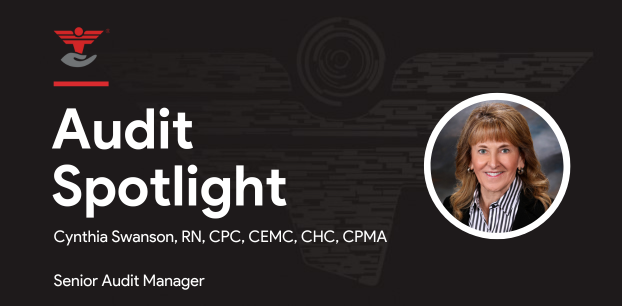
Audit Reveals Varied Costs for Spinal Surgery
Background
ClaimDOC’s comprehensive line-by-line review of claims uncovers errors that basic claim repricing and auto-adjudication does not catch, leading to greater savings for health plans and their plan members. Our audit team analyzes all types of healthcare claims for a variety of potential concerns, including excessive usual and customary charges, duplication of claims, incorrect coding, unbundling of services, and many others. Our claims review is not intended to impact care decisions or medical practice.
In this Audit Spotlight, we focus on hospital inpatient charges for two members having spinal surgery and the related charges reported and billed by different hospitals. Each hospital reported/billed services using DRG code 454, defined as: Combined anterior/posterior spinal fusion with complications/comorbidities.
Claims Analysis and Varied Costs for Spinal Surgery
Costs for spinal surgery differ depending on the specific surgery, city, where surgery is performed – hospital inpatient, hospital outpatient, ASC, whether the patient has insurance or not, and other considerations. In addition to facility charges, there will be professional charges for the services of the surgeon(s), assistant surgeon(s), and anesthesia, as applicable. Other costs may include outpatient physical therapy, durable medical equipment, and pharmacy.
As healthcare costs continue to climb an upward slope, there is an escalated need for a closer assessment of healthcare claims to assist in identifying improper medical coding, medical billing errors, egregious charges, and improper claim payments.
Case Scenario One
A hospital in Connecticut billed hospital inpatient services on the UB-04 claim/electronic equivalent, 837I. The primary medical ICD-10-CM diagnosis code was reported as, M48.062 – Spinal stenosis, lumbar region with neurogenic claudication.
High dollar charges included $122,285.68 for implants, $38,153.00 for operating room services, three days of room and board for $13,443.00, medical/surgical supplies for $11,214.35 and recovery room for $3,146.00.
ClaimDOC auditor’s review of the hospital’s itemized bill identified charges according to Medicare guidelines and consistent with industry standards to be part/partial to other reported and billed services in Revenue Codes 250-Pharmacy, 272-Medical/Surgical Supplies, and 300-Laboratory. These charges were disallowed, and only valid charges were considered for pricing.
Total Billed Charges $200, 886.19
Medicare DRG 454 rate – $56,836.47 (specific to claim information and hospital)
ClaimDOC pricing – $83,561.36 (based on the hospital’s cost-to-charge ratio (C-C/R) of allowed charges with markup)
Plan Savings: $117,324.83
Percentage of Savings: 58%
Case Scenario Two
A hospital in Ohio billed hospital inpatient services on the UB-04 claim/electronic equivalent, 837I. The primary medical ICD-10-CM diagnosis code was reported as, M48.062 – Spinal stenosis, lumbar region with neurogenic claudication.
High dollar charges included $91,685.00 for implants, $58,536.00 for operating room services, four days of room and board for $9,500.00, medical/surgical supplies for $5,972.00, and recovery room for $3,825.00.
ClaimDOC auditor’s review of the hospital’s itemized bill identified charges according to Medicare guidelines and consistent with industry standards to be part/partial to other reported and billed services in Revenue Codes 271/272-Medical/Surgical Supplies, 636-Drugs Requiring Detailed Coding and 730-EKG. These charges were disallowed, and only valid charges were considered for pricing.
Total Billed Charges $180,941.61
Medicare DRG 454 rate – $44,552.73 (specific to claim information and hospital)
ClaimDOC pricing – $65,798.13 based on the hospital’s C-C/R of allowed charges with markup
Plan Savings: $115,143.48
Percentage of Savings: 64%
The Takeaway
The improper reporting of services, coding/billing errors, and egregious charges can complicate matters for members to understand their healthcare bills and payments. These factors can also impact the collection of patient balances, build a reputation of providers charging high fees, create burdens for patients having no insurance, and a host of other issues.
Given the volume of healthcare claims billed each day by providers and suppliers, it is a given – medical billing errors are alarmingly common and lead to improper payments, potential waste, and abuse.
When an individual receives a bill for healthcare services appearing questionable/inappropriate, an inquiry to the provider and/or health plan should be made to obtain an explanation of the service(s), corresponding charges, and reimbursement.
Our goal at ClaimDOC is to use benchmark charges and costs nationally to negotiate fair and ethical payments. Our high-quality and expert review of claims identifies and prevents improper medical claim payments and maximizes long-term cost savings opportunities. Employers turn to us to establish fair reimbursement rates for their plans allowing them to save money and provide richer benefits to their employees. A win-win for everyone.